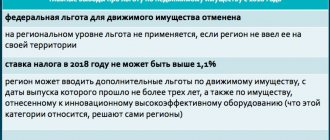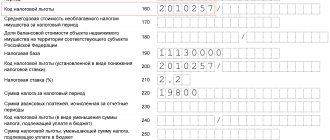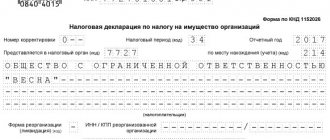Depreciable property is property, products of intellectual labor owned by an economic entity and used by it to generate income. In this case, the period of useful operation of such objects must be at least 12 months. The initial cost of depreciable property must be more than 10 thousand rubles. Its repayment is carried out through depreciation.
Depreciable property not subject to depreciation
This group includes:
- Material assets of budgetary organizations. The exception here is property acquired in the course of business activities and used for its implementation.
- The assets of non-profit organizations that are received in the form of targeted proceeds or purchased with targeted funds and are used to conduct the main non-profit activities.
- Valuables purchased with budget funds. An exception is property received by the subject during privatization.
- Objects of improvement, forestry, road management, the creation of which was carried out with the involvement of budgetary or other similar targeted funding, specialized structures for shipping purposes and other similar objects.
- Purchased publications (brochures, books, etc.), works of art. The cost of such objects (except for works of art) is included in other expenses associated with the production and sale of products at the time of purchase in full.
- Buffaloes, productive livestock, deer, oxen, yaks and other domesticated animals, except draft animals.
- Acquired rights to products of intellectual work or other intellectual property, if, according to the purchase and sale agreement, payments must be made periodically during its validity period.
Other depreciable objects
According to the legislation of the Russian Federation, the following objects are subject to depreciation:
- Property owned by a budget organization.
- Property that was purchased with budget funds.
- Property that was created through targeted financial proceeds.
It is also important to remember that depreciable property that was received by one unitary enterprise from the owner of another similar enterprise as part of economic supervision or operational management is certainly subject to depreciation from the first in the manner prescribed by law.
The same conditions apply to property received by an investor organization from the owner of the property. This is dictated by the legal documents of the Russian Federation on agreements in the field of investments related to the sale of public utility services.
But it is important to remember that not all fixed assets are subject to depreciation. We will talk about exceptions further.
Additionally
The following assets are also excluded from depreciable items:
- Transferred to conservation for more than three months.
- Received/transferred under a free use agreement.
- Those undergoing modernization/reconstruction, lasting more than 12 months.
When depreciating property is re-mothballed, depreciation amounts are accrued in accounting in the manner that existed before mothballing, and the useful life period is increased by its duration.
The initial price of an asset is determined as the sum of the costs of acquiring it and bringing it into a state of readiness for operation.
Excluded objects
Are securities not subject to depreciation? Let's look at specific examples of objects that, according to Russian legislation, will not be depreciated:
- Items that were created were purchased using funds from the budget as part of targeted funding.
- Objects related to external improvement.
- Works of art purchased by the organization. Their price is taken into account as part of all kinds of other expenses that are associated with production and sales. In this case, the size of the entire cost at the time of purchase is taken into account.
- Property that was created or purchased using funds that were received by the organization free of charge.
- Acquired rights to intellectual products. Other things related to similar property, in cases where accruals under the agreement are made in the form of payments throughout the entire term of its validity.
Groups of depreciable property
They are formed depending on the period of useful use of the objects.
An economic entity may, at its discretion, increase the period after the date of commissioning if modernization, reconstruction, technical re-equipment (re-equipment) led to an increase in the service life of the asset.
For convenience, groups of objects are shown in the table.
| Group | Duration of use (in years, inclusive) |
| 1 | 1-2 |
| 2 | 2-3 |
| 3 | 3-5 |
| 4 | 5-7 |
| 5 | 7-10 |
| 6 | 10-15 |
| 7 | 15-20 |
| 8 | 20-25 |
| 9 | 25-30 |
| 9 | More than 30 years |
The classification of OS included in groups is approved by the Government.
General information about the calculation of depreciation amounts
Calculation of depreciation of depreciable property, in accordance with Art. 25 NK, produced in a linear or non-linear way.
A business entity determines the amount of depreciation for tax purposes separately for each asset on a monthly basis. Accrual begins on the 1st day of the month following the month the facility was put into operation. The calculation also stops on the 1st day of the month following the month of write-off of fixed assets or disposal of depreciated property for any reason.
Features of accrual
When using the linear method, the amount of depreciation is determined as the product of the original cost of fixed assets and the depreciation rate. The latter is calculated as follows:
K = [1/n] x 100%.
In this formula:
- depreciation rate as a percentage of the original cost – K;
- the period of useful operation of the object, expressed in months, - n.
If a non-linear method is used, then the required value is determined by multiplying the residual value of the depreciable property by the rate:
K = [2/n] x 100%.
Depreciation: when to charge, when not to
Whether or not to charge depreciation on property depends on the purposes for which the company acquired it and how it is used (see, for example, letter of the Ministry of Finance of Russia dated July 11, 2021 No. 03-03-06/2/48148).
If the property is not used in the main activity, but is intended for sale, it is a commodity and is not subject to depreciation.
Property that, although not used in the main activity, but generates income, is also recognized as depreciable. This applies to rental properties. Thus, if a company purchased property, set a useful life for it and formed an initial cost, and then rented it out to generate income, it must be depreciated.
And fixed assets transferred for free use, from January 1, 2021, Law No. 325-FZ allowed depreciation. But at the same time, depreciation amounts on them will not be taken into account for tax purposes. An exception is OS transferred for free use in cases where such an obligation is established by the legislation of the Russian Federation.
Odds
They are used when calculating the amount of depreciation of depreciated property operated in aggressive conditions or with increased shifts. The coefficients can also be used by agricultural enterprises: greenhouse plants, poultry farms, livestock farms, etc. However, some restrictions are established.
In particular, the specified entities can use a coefficient no higher than 2. For fixed assets that are the subject of a leasing agreement, it is allowed to use a coefficient no higher than three in the calculation.
These provisions do not apply to objects included in groups 1-3 if a non-linear method is used.
Aggressive are artificial or natural factors, the influence of which causes increased wear of the OS. Operating in such conditions also equates to the presence of property in contact with a fire, explosive, toxic or other aggressive environment, which is the source (cause) of an emergency.
When calculating depreciation amounts for passenger minibuses and cars, the original cost of which is more than 400 thousand rubles. and 300 thousand rubles. Accordingly, a coefficient of 0.5 is applied to the basic norm.
By decision of the head of the enterprise, depreciation can be calculated at reduced rates, but only from the beginning of the tax period and throughout it.
Commentary on Article 256 of the Tax Code of the Russian Federation
Depreciation is charged on fixed assets and intangible assets. For the purposes of the Tax Code of the Russian Federation, both are called depreciable property.
In paragraph 2 of Art. 256 of the Tax Code of the Russian Federation lists those types of fixed assets and intangible assets that an organization cannot include in depreciable property, and depreciation for which, accordingly, is not accrued for tax purposes. First of all, we are talking about land, natural resources (water, subsoil, etc.), inventories, goods, securities and financial instruments of futures transactions.
Non-profit organizations can charge depreciation only on property that was purchased with funds received from business activities and used for its implementation.
The following also do not apply to depreciable property:
— property of budgetary organizations;
- property purchased with budgetary funds (depreciation is not charged on the part of its cost equal to these funds);
— property received as part of targeted financing;
— agricultural facilities built at the expense of budgetary funds;
— external improvement facilities (forestry and road facilities, specialized navigation facilities, etc.);
- productive livestock, buffaloes, oxen, yaks (except for draft animals);
— purchased printed publications, works of art;
— fixed assets and intangible assets received free of charge by nuclear power plants within the framework of international agreements with Russia to improve their safety.
And finally, the most important thing. Property whose original cost is less than 10,000 rubles is not considered depreciable. or equal to this amount. The costs of purchasing or creating such property are fully included in material costs as the facility is put into operation. In accounting, a similar rule applies only to fixed assets whose cost does not exceed 2,000 rubles. Their cost is written off as expenses as they are released into production or operation.
We add that from the composition of depreciable property it is necessary to exclude those fixed assets that:
- transferred or received for free use;
— preserved for a period of more than three months.
After the object is removed from conservation, depreciation on it must be accrued in the same manner;
— have been under reconstruction and modernization for more than 12 months. Now let's look at the changes in detail.
Taxation of inseparable improvements
Since 2006, the tenant has the right to include the cost of uncompensated inseparable improvements in his depreciable property (Article 256 of the Tax Code of the Russian Federation). True, this applies only to those improvements that were made with the consent of the landlord. That is, the lessee can depreciate the permanent improvements over the life of the lease. And the amount of depreciation must be calculated based on the useful life of the leased object. According to paragraph 1 of Art. 258 of the Tax Code of the Russian Federation, this period must be determined according to the Classification of fixed assets included in depreciation groups, which was approved by Decree of the Government of the Russian Federation of January 1, 2002 No. 1. Depreciation should be accrued from the next month after the improvements are put into operation.
Accounting for computer programs
If the exclusive rights to a software product are transferred to the buyer, it is considered an intangible asset (clause 3 of Article 257 of the Tax Code of the Russian Federation). In this case, a license agreement must be concluded, which lists the exclusive rights. Let's say, rewriting a program or database, further distribution, modification.
Taxation
For OS put into operation before the entry into force of Ch. 25 of the Tax Code, the useful life is determined by the business entity itself as of 01/01/2002, taking into account the classification approved by the Government and the periods of operation by group, enshrined in Art. 258 of the Code.
Regardless of the accrual method chosen by the taxpayer in relation to depreciated property put into operation before the entry into force of Ch. 25, the calculation is carried out based on the residual value.
Analytical accounting
It should reflect information about:
- The initial cost of an object disposed of in the tax (reporting) period, as well as its changes during additional equipment, completion, partial liquidation, reconstruction.
- Periods of useful operation accepted by the enterprise.
- Accrual methods and depreciation amounts from the beginning of calculation to the end of the month in which the sale (disposal) of the object took place.
- The cost of selling the property in accordance with the contract.
- The date of acquisition and sale (disposal) of fixed assets, its transfer into operation, exclusion from the composition of depreciable objects on the grounds set out in clause 3 of Art. 256 of the Tax Code, reactivation of the asset, expiration of the agreement on free use, completion of modernization and reconstruction work.
- Expenses incurred by the entity upon disposal of property. We are talking, in particular, about the costs provided for in subsection. 8 clause 1 art. 265 Tax Code, as well as the costs of storage, transportation and maintenance of the sold asset.
The profit received by a business entity is included in the tax base in the reporting period in which the sale was made. Losses incurred by the taxpayer are reflected in accounting as other expenses, in accordance with the rules established by Art. 268 NK.
Analytical accounting must contain information about the name of the assets in respect of which the amounts of the corresponding costs are recorded, the number of months during which they will be included in other expenses, as well as the amount of monthly costs.
Depreciable property in tax accounting in 2021: what has changed
In 2021, numerous changes were approved to the Tax Code of the Russian Federation, the main part of which came into force on January 1, 2020. The head of the Tax Code of the Russian Federation also underwent changes, adjustments to which were made by Law No. 325-FZ of September 29, 2019. In particular, amendments were made to Art. 256 of the Tax Code of the Russian Federation on depreciable property.
In the new edition of Article 256 of the Tax Code of the Russian Federation, intangible assets with a useful life of less than a year and a cost not exceeding 100,000 rubles are excluded from depreciable assets. Thus, in tax accounting, starting from 2020, fixed assets and intangible assets are depreciated, with SPI for more than 12 months and costing more than 100,000 rubles. (Clause 1 of Article 256 of the Tax Code of the Russian Federation).
The rules for the formation of the initial cost for accounting purposes in 2021, as before, are regulated by clause 8 of PBU 6/01, and for tax purposes - clause 1 of Art. 257 Tax Code of the Russian Federation.
It is necessary to take into account not only the period and cost, but also the purpose of acquiring and using the objects - they must bring income to the owner. Law No. 325-FZ allowed from 01/01/2020 to depreciate, incl. property transferred for free use. However, depreciation amounts for such objects should be taken into account only in accounting records, and not for tax purposes (except for cases where the obligation for such transfer is established by law).
The tax on depreciable property is calculated taking into account clause 2 of Art. 256 of the Tax Code of the Russian Federation, which lists objects the cost of which is not depreciated (land, environmental management facilities, inventories, goods, financial instruments, etc.).
Thus, in comparison with 2021, the initial cost of depreciable property in 2021 remained the same - 100,000 rubles, it has been in effect since 2021 (this applies to depreciable property in tax accounting). For intangible assets up to 100,000 rubles. depreciation in NU (tax accounting) from 2021 is not accrued; they must be written off as expenses immediately.
For BU, the initial cost of depreciable fixed assets remained in the amount of 40,000 rubles. OS objects are cheaper than RUB 40,000. can be taken into account as part of the inventory and written off as expenses upon commissioning. Intangible assets are depreciated regardless of cost.






